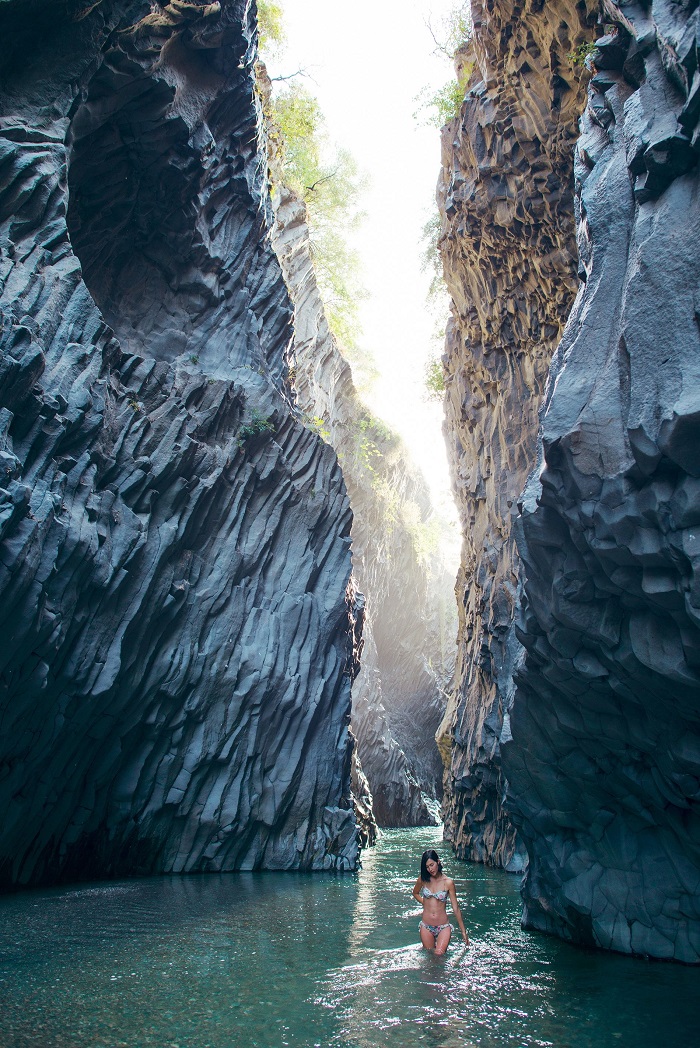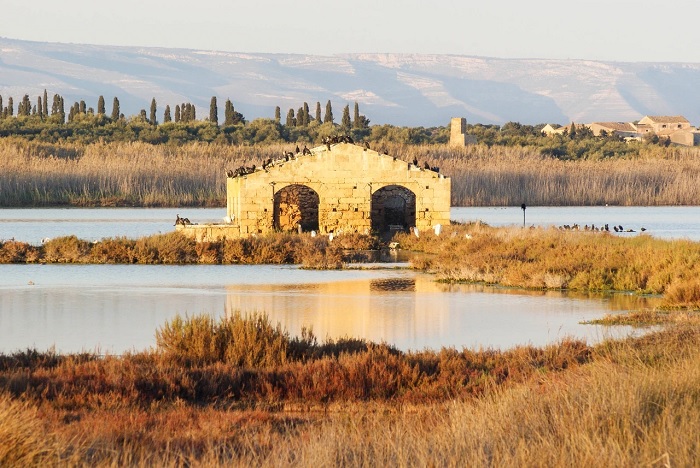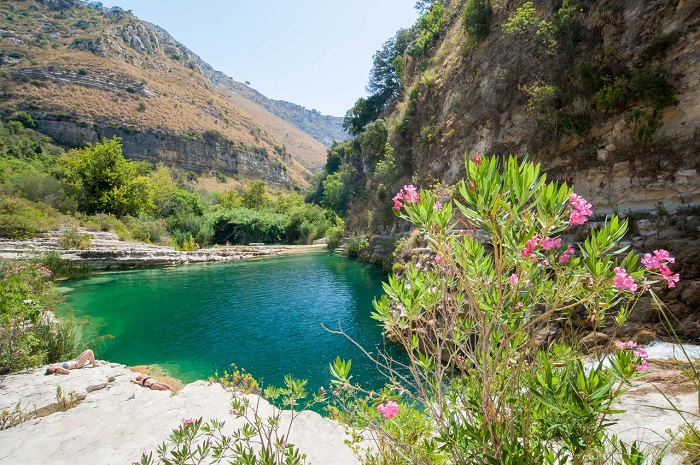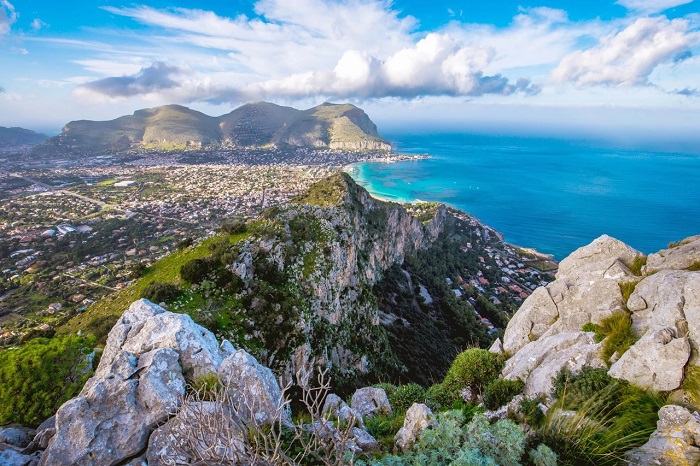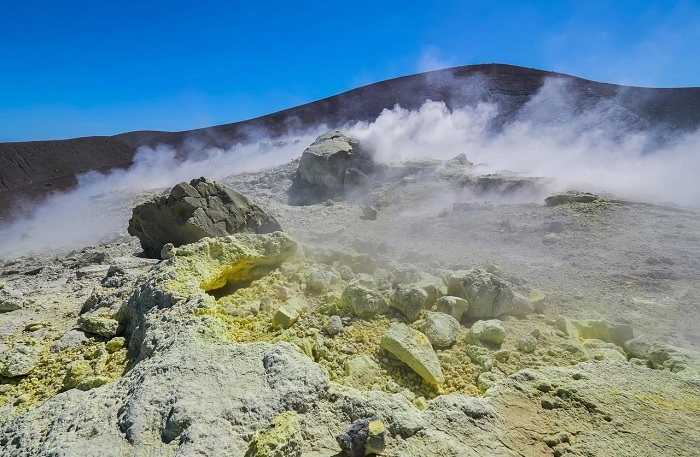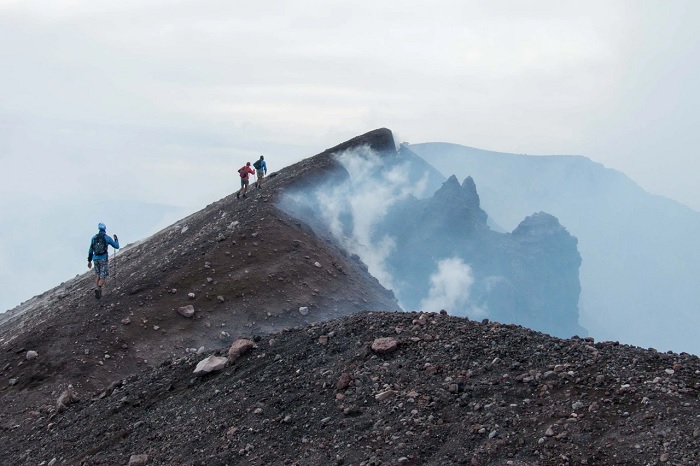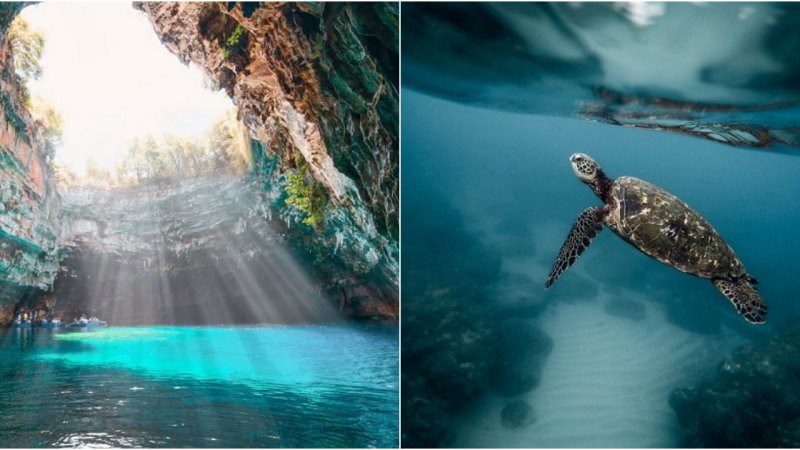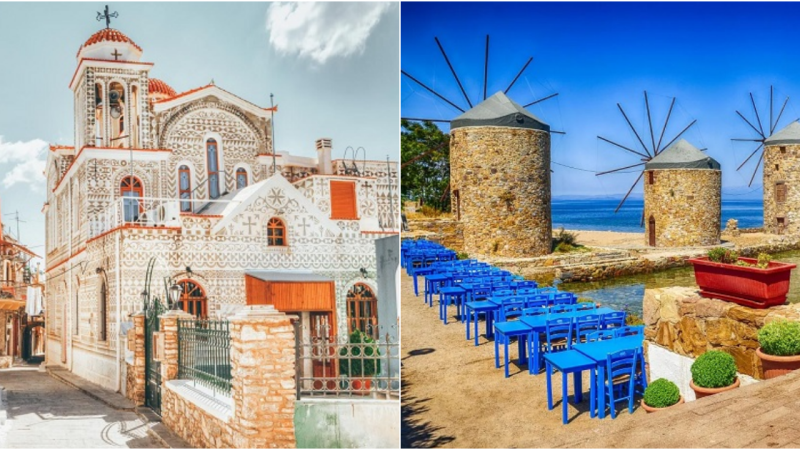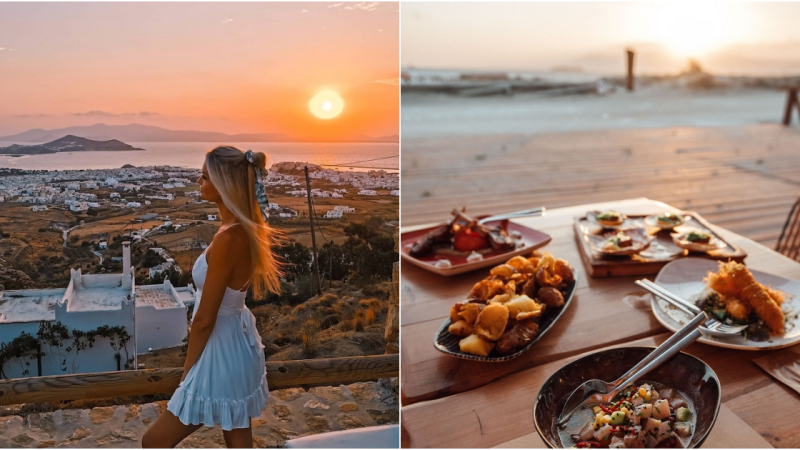Marveling at the Surreal Natural Wonders of Sicily
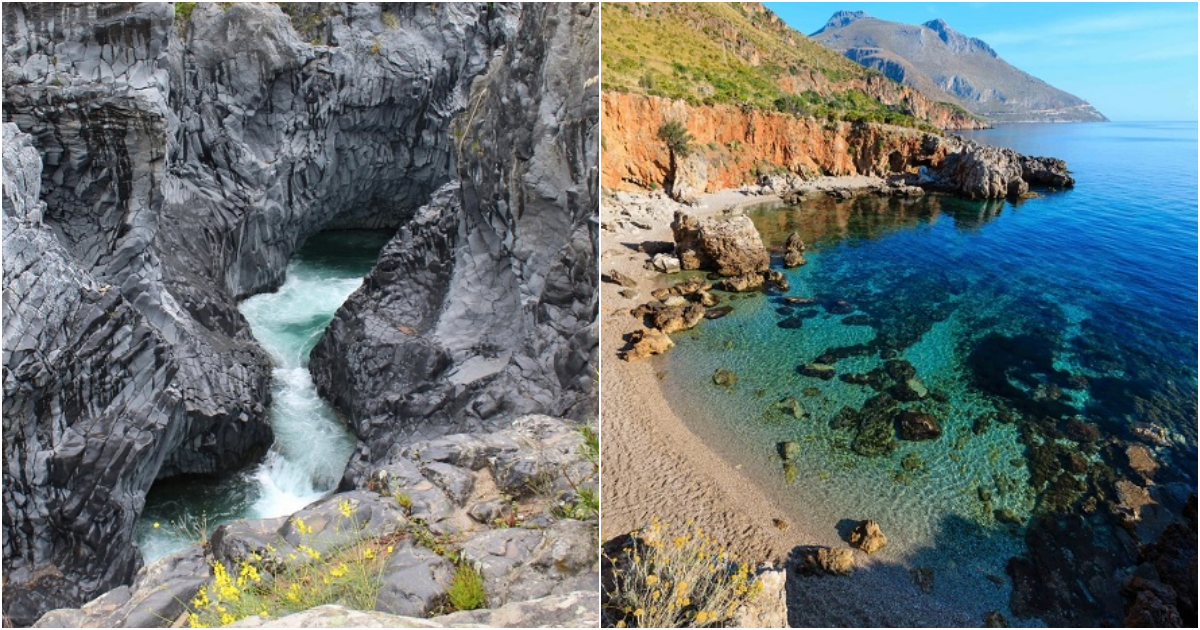
Sicily, the largest island in the Mediterranean, boasts a rich history and stunning natural landscapes. Let’s explore these awe-inspiring natural wonders of Sicily!
Natural Wonders of Sicily, Italy
1. Alcantara Gorge, Messina
Thousands of years ago, a river of lava from Mount Etna flowed northwards and met the Alcantara River, whose cool waters caused the lava to solidify into impressive black basalt columns.
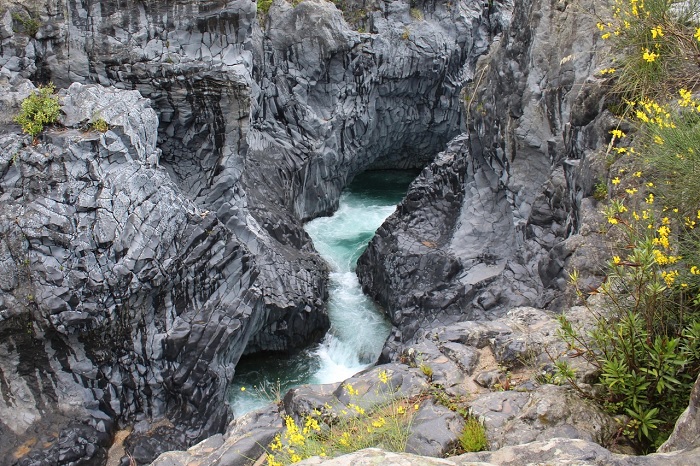
In recent years, the river has carved a new path through the volcanic rock, creating a spectacular gorge with crystal-clear water, perfect for walking through.
Tourists will find a map provided at the entrance with detailed information about the hiking trails through the gorge, and you can also arrange guided tours to explore deeper parts of the gorge.
On the map, favorite spots in this Sicilian natural wonder are marked, most of which highlight the region’s vegetation. Additionally, you can find an array of colorful wildflowers such as violets, orchids, poppies, and sea squill, thriving in the volcanic soil of the area.
2. Vendicari Nature Reserve, Noto
Pink flamingos flock to Vendicari in southern Sicily during spring and autumn, where they can find insects to feed on in the marshy coastal areas of this sandy beach. Stroll through the reeds and along the pristine beaches to discover various bird species, reptiles, and amphibians, including Sicilian pond turtles, rat snakes, and yellow toads.
On the beach, you’ll find scattered fragments, which may appear as debris at first glance, but are actually formations of Neptune grass leaves – an aquatic plant species that thrives in pure and unpolluted seawater.
3. Cavagrande del Cassibile, Avola
Cavagrande del Cassibile is a Sicilian natural wonder that will make you feel like you’ve stepped into another world. Descend the winding paths of a cliff to discover a stunning canyon with freshwater ponds and gentle waterfalls lying at your feet. Plunge into the ice-cold, emerald waters of the Cassibile River, and watch birds such as hawks and eagles soaring above.
Finally, take the time to admire the abundance of vibrant wildflowers along the path back. Admire moon orchids, gladioli, sage, and Jerusalem sagebrush, among many other precious wild species that nature has bestowed upon this Sicilian tourist destination.
Near the top, observe ancient tombs and enigmatic carvings on the opposite cliffs, known as dieri in Italian, about which little is known of their history or origin.
4. Zingaro Nature Reserve, Trapani
Seven kilometers and seven pristine bays… that’s what this beautiful nature reserve offers! Walk along one of the most precious coastal paths in western Sicily to admire the sparkling scenery along the coast, including small hidden coves, turquoise sea, and lime-white pebble beaches dotted with seashells.
Starting from the small village of Scopello, trek all the way to the beach town of San Vito Lo Capo, passing through seven bays along the way: Cala Tonnarella Dell’Uzzo, Cala dell’Uzzo, Cala Marinella, Cala Beretta, Cala della Disa, Cave del Varo, and Cala Capreira. Here, you can encounter eagles, peregrine falcons, and kestrels soaring to hunt in the lowlands with broom and wild lavender.
5. Monte Pellegrino Nature Reserve, Palermo
If you’re in the capital of Sicily and can’t venture far, seek out Monte Pellegrino, the dominating mountain landscape to the west of the Mondello Gulf. As one of the natural wonders of Sicily, it offers numerous hiking trails up to lush and wild peaks, providing sweeping views of the deep blue Tyrrhenian Sea stretching to the horizon.
This nature reserve is known in Italy for reptiles and birds of prey, such as peregrine falcons, kestrels, and hawks, and native plant species include the strawberry tree and Mediterranean maquis.
6. Aeolian Islands
This cluster of volcanic islands is a Sicilian natural wonder in the province of Messina, boasting untamed beauty and volcanic activity that cannot be overlooked. Located in the Tyrrhenian Sea, between northeastern Sicily and the toe of Italy, they are collectively listed as a UNESCO World Heritage Site.
Explore these magnificent islands and witness their dramatic landscapes, including craters, fumaroles, and black sand beaches. Each island has its own unique charm, with Stromboli known for its active volcano, and Lipari, the largest of the Aeolian Islands, offering a mix of lively town life and natural beauty.
Immerse yourself in the surreal beauty of these natural wonders in Sicily and discover the enchanting landscapes that make this island truly extraordinary.
Lipari serves as the hub of the Aeolian Islands, making it an excellent starting point to explore the six surrounding islands. It is well-equipped with a range of restaurants and hotels, and its transportation center provides regular ferry and hydrofoil services to and from Milazzo and Messina, the mainland ports of Sicily, as well as smaller boats to other islands. When visiting the smaller islands, you can explore the port towns on foot, but you can also rent a scooter to make the most of your time.
Most people set foot on Vulcano Island. It is famous for its mud baths, also known as “fanghi.” The unique landscape is due to the active Gran Cratere volcano, which emits sulfuric smoke almost constantly. You will also find some beaches there, with thermal hot springs.
Spend some time on the spectacular black sand beaches on Stromboli, perhaps the most beautiful of the Aeolian Islands. The Stromboli volcano has been continuously erupting since 1932, and its water vapor clouds constantly emanate from the summit. From here, you can take a long hike to the base of the volcano and the rocky coves of the surrounding beaches.
7. Mount Etna
Mount Etna dominates the landscape of Sicily; it is the second most active volcano in the world. Your first stop is Etna Sud, a base camp area with a variety of tourist shops, restaurants, hotels, and most importantly, the cable car station – Funivia dell’Etna.
Take the cable car (about 30 euros for a round trip) to get closer to the summit at 2,900 meters to start your Mount Etna exploration. There are plenty of heart-pounding hiking opportunities from the starting point, including the final trek up to the mouth of the volcano at an altitude of over 3,300 meters. Remember that you cannot climb to the mouth of the volcano without a guide or a volcanologist with expertise.
Above is a list of 7 awe-inspiring natural wonders in Sicily. Do you want to set foot on this enchanting island once in a lifetime?
